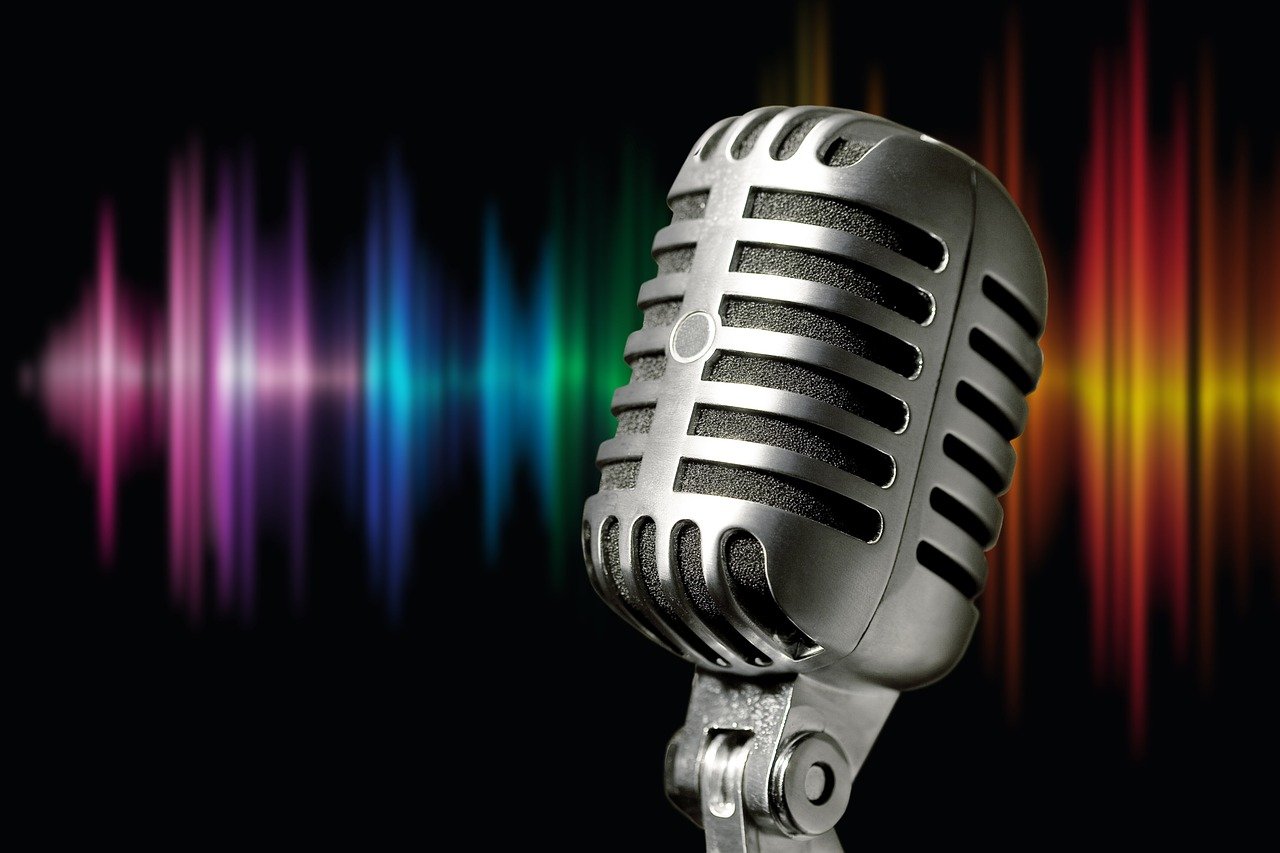Pacing and Flow: How to Optimize Your Writing for Audiobook Performance
Following audiobook pacing best practices is important for improving your listener's experience. The correct pacing helps you create effective comic timing, suspense, and a more enjoyable finished product. In this piece, we will look at improving pacing and flow in audiobook writing and crafting scripts for seamless audiobook narration.
Audiobook Pacing Best Practices
When it comes to optimizing audiobook narration, pacing is key. Here are four big things you need to take into account about audiobook pacing.
Room Tone
Something to consider when editing your audiobook is room tone. This is basically a blank recording; you just record a couple of minutes of quiet. You might be thinking, Can't I just add an empty audio track? The answer is simply a resounding no.
In film production, at various times during a shoot, the sound department will get a few recordings of room tone. They do this by going to a room in the location (or just a part of it if it's outside), gathering a few of the crew, and recording everyone standing around being quiet. That's the whole track—about two minutes of nobody doing anything, just some boring quietness. But crucially, not silence! You see, wherever you are, there are background noises you aren't consciously tuned into because your brain is used to them.
Think about when you are at home alone. Maybe you're sitting on your couch, reading a book with a cup of coffee, enjoying peace and quiet. The thing is, while you are doing that, there are pipes rattling in your house. Maybe there's noise coming from the central heating or household appliances. There are background noises; you just are not hearing them because your brain is used to them and knows they are not worth focusing on. But if they weren't there, ironically, you would actually notice. This is why they get room tone for film and TV recordings because they will need to add it into spaces between tracks where there is true silence.
This is the case for audiobooks too. You are never going to have true silence, which is to say that when you are editing your audio and lining up your tracks, you are not going to have a scenario where you just have some blank space; there always has to be something. So remember, the quiet parts of your audiobook are not silent.
When you are editing your audiobook, ensure that you take a look at the requirements of the outlet that you want to use. Different audiobook websites will have different rules for organizing your audiobook. For example, on Audible, which is one of the most popular audiobook publishing services, it is required that you have half a second of room tone at the beginning and 2.5 seconds after each chapter name. Audible also demands that you have 2–3.5 seconds of room tone after section breaks in your chapters and a whole 3.5 seconds at the end of each file. Different platforms may vary, and some may allow you to use music rather than room tone (but you will still need to record room tone regardless to use at different points in your book). Ensure that you study the regulations for whatever platform you are going to use.
So remember, the silence you hear in an audiobook is not actually silence; it is room tone.

Audiobook Pacing—How to Read the Book?
Maybe you will be voicing your own audiobook, or maybe you'll find a voice actor. Regardless of which way you go, you need to consider how the book will be read. A professional voiceover artist will have training and experience, but if this is your first time doing a reading or an audiobook, you need to avoid certain pitfalls.
There are two things to take into account when it comes to pacing in audiobooks: When to use a normal pacing and when to use a different pacing. Let's break that up and look at what that actually means.
By using normal pacing, we are talking about how you will read most of the book. Basically, not every part of the book is going to be really exciting or suspenseful; there are times when you need to just get your information across clearly. So, you are just using a normal narrating voice. But crucially, this does not mean a boring voice! If the narrator of your audiobook sounds incredibly dull and is reading in a monotonous style, then your listener will quickly lose interest. The normal voice your narrator uses throughout should still:
- Be interesting to listen to, and make your listener want to stay tuned.
- Be interested in what they are reading (you don't want the narrator to sound like they don't care).
- Be tonally appropriate, as the tone should be fitting for what they are reading (you can really hear a smile, so if the part of the book is happy or sad, keep that in mind).
- Be consistent, and do not constantly change your style and accent inappropriately.
The voice your narrator uses for most of the book should make sense for the content, not be stressful or difficult to listen to and be easy to understand.
So that's for most of the book, but when should your narrator adjust the pace? That all depends on what they are reading. But there will be certain times when the pacing of the reading should be adjusted. Here are some tips on when you should change things up:
- If your audiobook contains an action scene, then the pace should quicken. Really, the pace at which the narrator is speaking needs to match the excitement of what is happening.
- When you are building some suspense and trying to create the idea that something is about to happen, you need to shift the pace. Think of it like the music when you are watching a horror movie. Things should start slow, then pick up speed, then slow down and speed up again in accordance with what is happening to create an uneasy, titillating atmosphere.
- When something significant is happening, i.e., a key revelation, take a longer than normal pause. Even holding on for an extra half of a second will add to the importance of the moment.
In essence, the appropriate pacing for your book will depend on what is actually happening in the story. There will be times when the pace should speed up and then slow down. It's important to establish the ideal pacing before you start recording.
Post-Production Magic
In an ideal world, your original files from your audiobook recording sessions will be absolutely perfect, to the extent that you do not even need to edit them. However, this is very unlikely to actually be the case. No matter how good your voiceover artist is, there will always be some little tweaks you need to make. This is where the magic of editing comes in, and it can help you improve the pacing.
To get audiobook pacing right, you usually have to go back and adjust a few things. Audio editing software will always allow you to adjust the tempo of a recording. As well as this, you can also add silence so that there is a longer gap between words or tracks (but remember to put that all-important room tone underneath the silence!).
It is important to get as good a recording as possible; audio editing software can only work with what you give it. But don't worry if there are a few things that need changing later because you can always work on them in post-production. There is free-license audio editing software like Audacity out there that is easy to use with plentiful instructional videos online.

Dialogue
So, we've talked about narrating a lot, but what about when people are actually talking in your story? Depending on your budget and your creative preferences, you may decide to have different people voice different characters, or you might just have one voice throughout the whole audiobook. Either way, the pacing of dialogue is really important.
Think about the people you know and talk to in the real world. Not everybody talks at the same speed and in the same way all the time. Think about your individual characters and how they would behave. Depending on who they are talking to or what they are talking about, they may say something really fast or slower than normal, and there will be times that they might take a pause. If your character is angry, and in an argument, they are probably going to talk at a quick, furious pace. At the same time, if your character is nervously trying to tell someone they love them, they will probably pause and struggle to get the words out.
So, you can see how the pace of your book should vary depending on the context of what is being said and the tone you want to set. Crucially, it's important that, at all times, the speech is perfectly clear and easy to understand. Optimizing audiobook narration starts with good pacing.
Crafting Scripts for Seamless Audiobook Narration
Another part of optimizing audiobook narration is improving pacing and flow in audiobook writing. But wait, didn't we just talk about pacing? Yes, we did, in the context of actually reading out the narration. But now, let's talk about writing for audiobook performances and how a good script can lead to a great narration.
First of all, you're writing something for someone to read out loud; basically, you are writing a script to be spoken. So you need to write how people speak rather than how people read. When writing a print book, you can use long sentences that are a bit harder to understand and get away with them because the reader can always go back and reread them. However, in an audiobook, your listener will not have that luxury. It's better to keep things fairly simple and straight-forward (but not boring or unimaginative). When writing your script, look at what you have written and ask whether or not someone could understand it without rereading it.

A good way of ensuring your writing will work well as spoken word is to actually read it out loud while you draft it. Even if you are not going to be voicing your own audiobook, you should read sections out loud and see how easy it is to manage. It is important that you are able to read each part without stumbling over words or taking unnaturally long pauses. Seeing which parts of the script are hard to read out loud will help you know where you need to make adjustments, ensuring you can go about optimizing audiobook narration.
One final crucial thing to keep in mind while writing for speaking is punctuation. Get into the frame of mind of thinking about the text as a script. Punctuation helps you know when to break up speech; use it a lot! In a script for narration, you will have more punctuation than you would in a print book. Be very charitable with the commas and periods because it will make the narrator's job much easier.
Writing Techniques for Audiobook Performance Optimization: A Final Note
We've established that pacing is key to writing for audiobook performance. Having a good, well-written script will help you immeasurably in optimizing your audiobook's performance. Having the correct pacing and timing in your book will improve the listener's experience when accessing it on any platform.
Another thing to consider is your audiobook description. In your description, ensure you use keywords that will help users find your books. You should also use tags and categories to provide more information about your book.

Always be thinking of the metadata you can provide about your content. Metadata is data about data, so things like the author's name, the genre of the audiobook, and things that describe the book. The more of this you provide, the better it will help optimize your audiobook for search engines.
Final Words
Following audiobook pacing best practices will help you optimize audiobook narration. Take care in crafting scripts for seamless audiobook narration and improving pacing and flow in audiobook writing to help boost your audioboo










